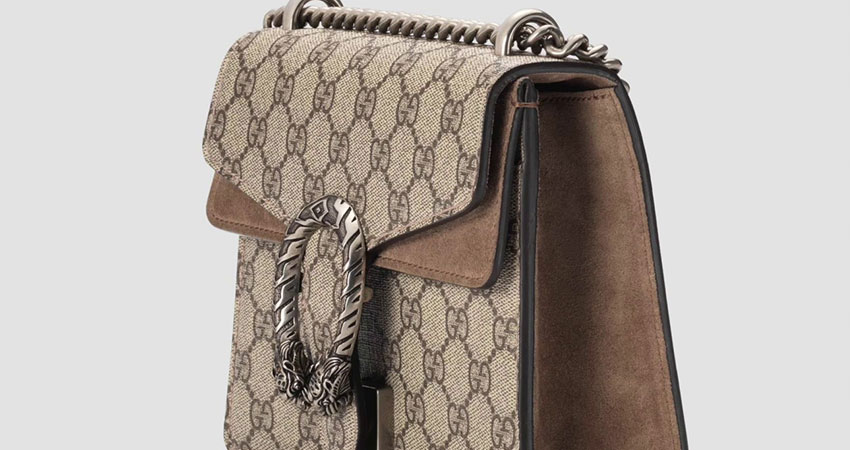The U.S. government is moving to crack down on the sale of counterfeit ecommerce items and pirated goods, warning of stricter rules and penalties for participants in a rogue economy that was valued at $509 billion in 2016.
Louis Vuitton bags and Rolex watches are the most common emblems of the problem, and government seizure statistics from FY 2018 show apparel and other types of accessories, along with footwear, topped the list at 18% and 14% of seizures, respectively.
Nike and Adidas footwear and NFL jerseys were the most commonly counterfeited items in the category. Watches and jewelry follow at 13% of total seizures. During the government’s Mega Flex operation last August, Customs and Border Patrol (CBP) officers seized counterfeit Rolex watches valued at over $1.4 million, the report said.
A Jan. 24 Department of Homeland Security (DHS) report announcing the crackdown came in response to an April 2019 memorandum from President Trump on combating trafficking in counterfeit and pirated goods.
“The President’s historic memorandum provides a much warranted and long overdue call to action in the U.S. Government’s fight against a massive form of illicit trade that is inflicting significant harm on American consumers and businesses,” DHS Acting Secretary Chad Wolf said in the report.
“Despite public and private efforts to date, the online availability of counterfeit and pirated goods continues to increase,” the report said, issuing a series of actions to be taken immediately:
- Ensure Entities with Financial Interests in Imports Bear Responsibility
- Increase Scrutiny of Section 321 Environment
- Suspend and Debar Repeat Offenders; Act Against Non-Compliant International Posts
- Apply Civil Fines, Penalties and Injunctive Actions for Violative Imported Products
- Leverage Advance Electronic Data for Mail Mod
- Anti-Counterfeiting Consortium to Identify Online Nefarious Actors (ACTION) Plan
- Analyze Enforcement Resources
- Create Modernized Ecommerce Enforcement Framework
- Assess Contributory Trademark Infringement Liability for Platforms
- Re-Examine the Legal Framework Surrounding Non-Resident Importers
- Establish a National Consumer Awareness Campaign
“This is not about any one ecommerce platform — this is about ecommerce playing by a different set of rules that simultaneously hammer brick-and-mortar retailers, defraud consumers, punish workers and rip off intellectual property rights holders,” White House trade adviser Peter Navarro told the Wall Street Journal. “It’s Amazon, Shopify, Alibaba, eBay, JD.com, Walmart.com and a constellation of lesser players that provide the digital hubs.”
“Government action alone is not enough to bring about the needed paradigm shift and ultimately stem the tide of counterfeit and pirated goods,” the report said in offering a list of best practices for ecommerce platforms and third-party marketplaces:
- Comprehensive “Terms of Service” Agreements
- Significantly Enhanced Vetting of Third-Party Sellers
- Limitations on High Risk Products
- Rapid Notice and Takedown Procedures
- Enhanced Post-Discovery Actions
- Indemnity Requirements for Foreign Sellers
- Clear Transactions Through Banks that Comply with U.S. Enforcement Requests for Information (RFI)
- Pre-Sale Identification of Third-Party Sellers
- Establish Marketplace Seller ID
- Clearly Identifiable Country of Origin Disclosures
A Walmart spokesman told the WSJ the retailer uses “select sellers in our marketplace, all of which we’ve carefully vetted” and that the items reported as counterfeit make up “a very small fraction of less than 1% of total items available for sale on Walmart.com.”
“We already have programs and processes that go well beyond our obligations under U.S. law,” an Amazon spokeswoman told the WSJ. “This year we will begin reporting all confirmed counterfeiters blocked from our stores to law enforcement entities so they can build cases against these bad actors.”
According to the DHS report, seizures of fake and counterfeit goods by CBP and U.S. Immigration and Customs Enforcement (ICE) increased from 6,500 to 33,810 from 2003 through 2018. The domestic value of seized merchandise in terms of MSRP increased from $94 million in 2003 to $1.4 billion in 2018, the report said.
Behind the most commonly counterfeited categories of apparel, accessories, footwear, watches and jewelry, handbags and wallets represented nearly 11% of all seizures, including luxury brands such as Louis Vuitton, Michael Kors and Gucci. Consumer electronics represented 10% of seizures, including products such as iPhones, hover boards, earbuds, microchips and others.
While pharmaceuticals and personal care items accounted for only 7% of total seizures, the government report said, “Fake prescription drugs can lack active ingredients, contain incorrect dosages, or include dangerous additives. Fake personal care items such as cosmetics have been found to contain everything from harmful bacteria to human waste.”
Between 2017 and 2018, CBP and ICE Homeland Security Investigations (HSI) seized over $31 million in fake perfumes from China, the report noted.

